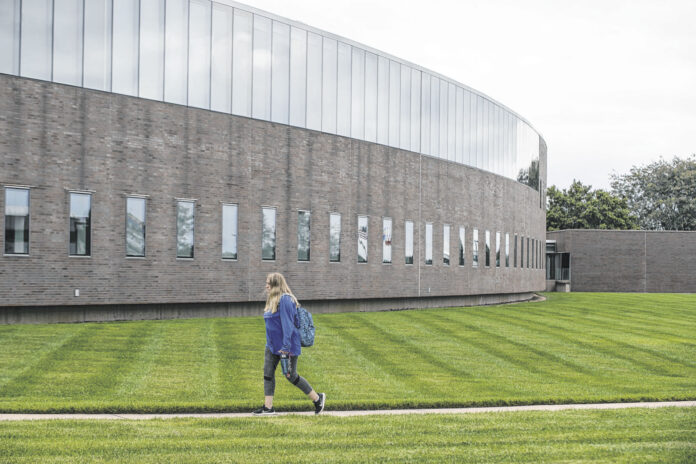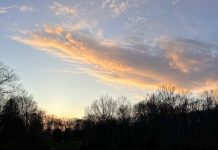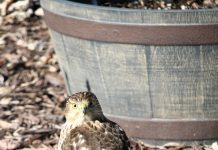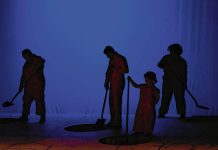
Connections, gatherings, and growth.
These are the three things that local stakeholders hope to see in the Columbus Airpark campus, according to landscape architecture firm Gustafson Guthrie Nichol (GGN).
The Seattle-based firm met virtually with stakeholders to discuss the airpark landscape design project and present findings from a previous input session.
GGN was announced as the landscape design partner for this project in June. It was selected from a group of four firms recommended by the Cummins Foundation’s architecture program. The foundation is providing a grant for a “design framework” for the campus and a detailed design for its southwest corner.
The final stakeholder engagement session will take place in early November. According to officials from the Community Education Coalition, these design discussions will help envision the future for the Columbus Learning Center area and aid GGN in developing a design “that responds to the needs and views of the campus’ users.”
The meeting began with GGN representatives presenting the main themes and takeaways from the previous engagement session. They then presented ideas and questions regarding what activities and projects the AirPark landscape could facilitate. Guests discussed the possibilities in breakout rooms.
GGN project Manager Alex McCay said that GGN plans to refine the takeaways from the day’s session and move toward more “in-depth concepts” for a framework presentation at the final session in November.
‘Trapped on an island’
GGN founding partner and design principal Shannon Nichol said that a major theme from stakeholders’ comments was a sense of “missing connections” — not just within the campus itself, but also between it and surrounding areas and neighborhoods.
“This was about practical things, like being able to cross the streets around the campus, around missing sidewalks, things like that,” she said. “It was also about the feeling of kind of being trapped on an island.”
Feedback included descriptions of “sparse paths” and few people outside.
Andy Polefrone with GGN said that since the campus attracts commuters, it has adopted a sort of “vehicle-centered shell around the outside of campus.” While there are ways to walk between the buildings, people are looking for more ways to “wander” between them.
“You want more dynamic, varied ways of walking around,” Polefrone said. He added that people also wanted more connection with the People Trail and surrounding landscape.
Joe Fuehne, director of Purdue Polytechnic Columbus, noted in a breakout session that while a lot of people use People Trails in the AirPark area, “We don’t ever see them.”
“At least, I don’t see them from my office, sitting here, looking out on the quad,” he said.
GGN also discussed the need to connect not just with the surrounding community but also commuters who come from farther away.
Polefrone noted that about 64% of AirPark students come from outside of Bartholomew County.
“We really have to think about what kind of a drive that is and how the campus can support people who are coming from a pretty far distance, sometimes, and be sort of a home for people who are really coming a long distance to be part of this project,” he said.
A place for everyone
Nicole said another common theme was “a need for places to gather,” especially places for “everyone” — including families.
One of the current problems with campus space is its scale, said McCay. Spaces are currently very large and “don’t give you a place to stay.”
“Really, this campus is really more akin to a park when we think about the size and we think about how it’s laid out, when we think about all the things that it can contain and the things that it can offer,” he said.
McCay added that in examining the size of quads and green spaces at other regional campuses, GGN found that many of these spaces can fit into AirPark boundaries at the same time.
Furthermore, people want “places” to gather, rather than a “singular place,” he said. This means that larger spaces need to be broken down.
“We heard really strongly, ‘Places for kids and families are really important for here’,” McCay said. “I think this is one thing that we expected going into it, but we knew even more after talking to people that this was really a huge part of the identity of this place — in a way that means that it has different needs than certain other campuses might.”
Some stakeholders suggested adding components to the campus landscape that kids in particular can enjoy.
Tracy Souza, president and chief executive officer of The Heritage Fund, mentioned balance beams.
A place for a child to take a break during walks would also help, said Bryan Rushton. In addition to being the president of the new Columbus Propeller makerspace at the airport, Rushton works at LHP Engineering Solutions and used to be a student on the Learning Center campus in the AirPark.
Like Souza, he favors the idea of having features that kids can interact with.
“It doesn’t have to be a true playground, but some type of activity, I think, would be wonderful,” he said.
Growth and identity
Yet another theme from the previous session’s input was “a desire to grow,” said Nichol. Some comments from stakeholders showed a focus on how the campus has developed over time and will continue to evolve in the future.
Nichol said that people want to anticipate future activities that aren’t currently going on, showcase the current programs housed inside buildings and also see how the campus can literally grow in its connection to nature.
She added that firm also wants to address the identity of the campus, the AirPark and Columbus itself.
“The next step after you do the physical framing of a campus plan or a master plan is ‘What is it made of?’” Nichol said. “And in this case, we don’t think, from what we’re hearing, that it’s made of the typical materials of a college campus — even the great ones.”
Rather than being represented by the “monumental spaces” and fixed formality that characterize some campuses, she believes that the AirPark campus is made up of “all the things that people, learn, build and do here.” She hopes that the landscape can showcase those qualities.
“Instead of this being a campus that gets installed, it’s a place that will grow,” Nichol said.
She then presented two questions for participants to discuss in breakout rooms — what kind of outdoor activities could take place on campus, and what can the land produce?
Nichol’s presentation included a wide range of possible activities, such as wellness-focused, recreational, educational and cultural events. She also suggested using the campus for projects that are environmentally-friendly and further sustainability.
Rushton expressed interest in projects involving energy, crops and nursery stock. He added that he’s also seen other people moving towards horticulture and farming.
He and Fuehne both enjoy the idea of using the campus landscape to showcase the “futuristic” side of agriculture.
“What if you had a glass greenhouse … that had hydroponics in it?” Fuehne suggested. “So people would walk by and see it, and there might be a nice big sign on it that says ‘This is an Ivy Tech agricultural experiment.’ … Something that folks could stop and look at and wonder about.”
People might also be interested in herbal remedies, Souza added.
On the sustainability side, Fuehne noted that working with miniature wind turbines is a project Purdue Polytechnic students would likely enjoy.
“There really is an opportunity to make a strong environmental statement or sustainability statement with the campus,” Souza said. “…If I think about the community broadly, there’s not really — there are pockets where there’s some environmentally responsible things happening, but there’s not really a center for it. And could the campus become a center for all kinds?”
The campus can be both a “case for sustainability” and a recreational space, added Rushton.
“I don’t think that’s mutually exclusive,” he said.
In discussing possible AirPark activities that could take place outside, Souza also referenced the versatility and engagement featured in Tappan Square at Oberlin College, which her daughter attended. The park is “a part of everything,” Souza said, from graduation ceremonies to student traditions to small performances.
“Everything happens in Tappan Park,” she said. “… The night before they graduate, there are paper lanterns that are strung throughout the park. And the big deal is to go and you walk through there, so that the whole community’s connected to the life of the college campus.”




